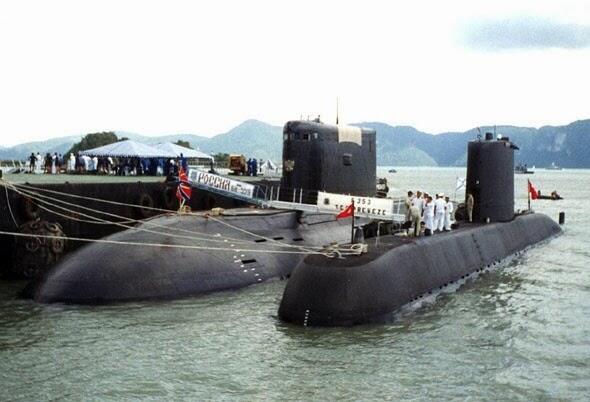JAKARTA-(IDB) : When the Indonesian Navy posted Kilo-class submarine No. 412 on its
2013 official calender, the public was surprised, and cheered that the
country’s submarine fleet now totaled 12, an extrapolation from the fact
that its first and second submarines are coded as No. 401 and 402
respectively.
While there is no confirmation from the military on the exact number
of submarines, Bantarto Bandoro, a senior lecturer at the Indonesian
Defense University, said the conjecture was correct.
“However, there are probably only five that are operational,” he told the Jakarta Globe on Monday.
Bantarto said such a number was seen as inadequate for guarding
Indonesia’s vast sea area and defending it from an attack when compared
to neighboring countries such as Malaysia, Singapore, Thailand and
Vietnam.
Bantarto said recent developments in Northeast Asia, where China is
in dispute with Japan and South Korea due to its claim over the entire
South China Sea, could make the region unstable.
“That’s why it’s understandable that we strengthen our defense
capacity, and one way of doing that is buying more submarines,” he said.
Defense Minister Purnomo Yusgiantoro said previously that Indonesia
was faced with two options for strengthening its naval fleet, either by
procuring used submarines from Russia, or buying new ones from South
Korea.
However, Gen. Moeldoko, the chief of the Indonesian Military (TNI),
and Navy chief of staff Adm. Marsetio hinted on Sunday that the country
could buy submarines from both countries so as to have at least 12
units, the minimum number seen as adequate to deter outside attacks.
“Currently we are still studying and calculating the plan to
strengthen our defense capacity. It would be great if we could acquire
the Kilo-class submarines, which have a long firing range for guided
missiles,” Moeldoko said on Sunday.
The “Kiloklav” Kilo-class submarine can hit a target 400 kilometers away from below the ocean’s surface.
Earlier, Marsetio said a Navy technical team would be sent to Russia
in January to study an offer from that country to sell submarines to
Indonesia.
“If Indonesia were to buy the Russian submarines, the country would
be the first in Asia to have Kilo-class submarines,” he said, citing
that this was an important and essential move for this country, where
seas make up two thirds of its territory.
Defense Minister Purnomo said recently that negotiations were
underway with Russian government concerning the submarine purchase.
“We would prefer ones equipped with Club S guided missiles that could hit a target 400 km away,” Purnomo said.
Club S guided missiles are launched from under the water to hit
floating targets, he said. “This type of war equipment is a killer
missile.”
He said the submarines Indonesia wants to buy must be suitable for the country’s eastern regions, where the ocean is deep.
Missile Boats
He said the country also plans to build up to 40 guided missile
speedboats measuring 40-60 meters in length, between now and 2024, to
meet the navy’s needs in the western part of the country.
Indonesia will also acquire three submarines from South Korea, Marsetio said.
According to Bantarto, buying new South Korean submarines with higher
price tags will still be cheaper for the navy’s operations.
“[This way], we don’t have to overhaul our infrastructure, including our submarine dock, which would be costly,” he said.
The Defense Ministry said last year that Indonesia was planning to more than double its submarine fleet by 2020.
Ministry spokesman Brig. Gen. Hartind Asrin said the submarines would
be a vital component in the defense of Indonesia’s maritime borders.
President Susilo Bambang Yudhoyono vowed earlier this year that the
Indonesia’s military will continue to replace outdated equipment and add
new hardware to adequately defend the nation.
Yudhoyono slashed defense purchases during his first term to free up
money for economic and social policies, but later increased defense
spending in the wake of domestic criticism and the repeal of the US
defense assistance ban.
Defense comprised the largest share of government spending at Rp 83
trillion ($7.65 billion) this year, up from Rp 77.7 trillion in 2012.
Yudhoyono said in August that he had requested more money for the
military’s budget “to improve the readiness and reliability of the armed
forces in safeguarding territorial sovereignty, in executing defensive
tasks of the state during peacetime, and in participating in maintaining
world peace.”
Purnomo said the purchase of the submarines and other defense
equipment sends a message that the president has taken a progressive
step toward modernization of the Indonesia defense system so that “we
can keep up with Asean members.”
Source : JakartaGlobe

Tidak ada komentar:
Posting Komentar